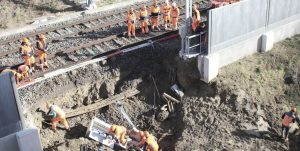Marc Choffet
Director: Prof. Michel Jaboyedoff
Jury: Prof. Michel Jaboyedoff, Prof. Eric Verrecchia, Prof. Franco Romerio, Prof. Jean Ruegg, Dr. Markus Imhof
In Switzerland, the annual cost of damage by natural elements has been increasing for several years despite the introduction of protective measures. Mainly induced by material destruction, building insurance companies have to pay the majority of this cost. In many European countries, governments and insurance companies consider prevention strategies to reduce vulnerability. In Switzerland, since 2004, the cost of damage due to natural hazards has surpassed the cost of damage due to fire; a traditional activity of the Cantonal Insurance company (ECA). Therefore, the strategy for efficient fire prevention incorporates a reduction of the vulnerability of buildings. The thesis seeks to illustrate the relevance of such an approach when applied to the damage caused by natural hazards. It examines the role of insurance place and its involvement in targeted prevention of natural disasters.
Integrated risk management involves a faultless comprehension of all risk parameters. The first part of the thesis is devoted to the theoretical development of the key concepts that influence risk management, such as: hazard, vulnerability, exposure or damage. The literature on this subject, very prolific in recent years, was taken into account and put in perspective in the context of this study.
Among the risk parameters, it is shown in the thesis that vulnerability is a factor that we can influence efficiently in order to limit the cost of damage to buildings. This is confirmed through the development of an analysis method. This method has led to the development of a tool to assess damage to buildings by flooding. The tool, designed for the property insurer or owner, proposes several steps, namely:
- Vulnerability and damage potential assessment;
- Proposals for remedial measures and risk reduction from an analysis of the costs of a potential flood;
- Adaptation of a global strategy in high-risk areas based on the elements at risk.
The final part of the thesis is devoted to the study of a hail event in order to provide a better understanding of damage to buildings. For this, two samples from the available claims data were selected and analysed in the study. The results allow the identification of new trends. A second objective of the study was to develop a hail model based on the available data. The model simulates a random distribution of intensities and coupled with a risk model, proposes a simulation of damage costs for the determined study area.


